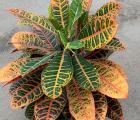Indian Summer Rudbeckia
Also called Black Eyed Susan, this course, hairy perennial plant features daisy-like flowers with bright yellow to orange-yellow rays, with dark chocolate brown center disks. Huge flower heads that are 6-8" in width add bold, stunning color to landscape borders. They do best in full sun and the soil needs to be kept moist but mostly require little maintenance. They work best in Zones 4-10. They will naturalize in the bed by self-seeding. They attract butterflies and are drought tolerant. Surprisingly, deer tend to avoid this plant. Deadhead any spent flowers to encourage additional flowering and prevent any unwanted self-seeding.





